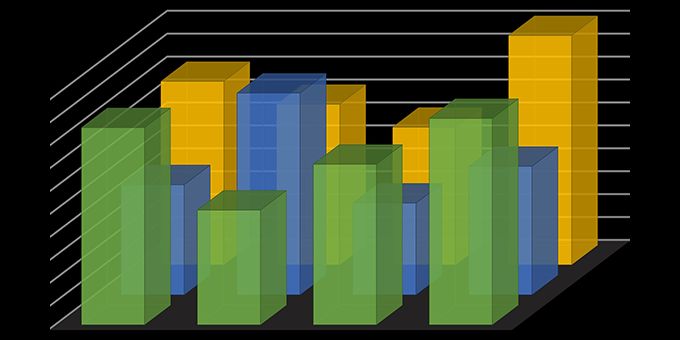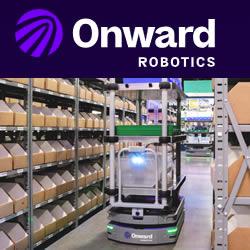There is a lot of buzz surrounding industrial analytics, artificial intelligence (AI) and machine learning (ML). However, companies are not limited to taking large and costly decisions when it comes to exploring the possibilities.
 Incremental Steps to Creating Value With Industrial Data Analytics
Incremental Steps to Creating Value With Industrial Data Analytics

Elliott Middleton, Director of Product Management | AVEVA
Until recently, more mature process industries have pursued AI and ML initiatives, while others are only using some basic levels of automation. The unrelenting pressure to keep production lines moving, especially at a time when businesses are responding to changes driven by the Covid-19 crisis, means there is little time or headspace to consider implementing new technology. Automating the collection of sensor data, spotting problems and patterns can result in faster troubleshooting and major process improvement for all sizes of operation. It is possible to start with small incremental steps that add immediate value.
The journey to adding value through data analytics
Here are seven steps to generating incremental value with industrial analytics and ML:
-
Automate data collection from sensors. This is a critical prerequisite. An infrastructure for automated data collection requires multiple sensors to feed through the data that is needed for meaningful analysis.
-
Record measurements from the sensors over time. The challenge for many organizations is collecting the data and making sure that data is captured throughout the process so that the workforce has the option to draw some useful inferences at a later stage. You may not have an immediately obvious use case but if you start collecting all the data, additional insights are likely to arise.
-
Accelerate Diagnostics: Once you have collected the data, diagnostics can greatly reduce the time required to pinpoint and correct operational problems—and lead you to make process changes that prevent them from happening again in the future.
-
Make the Data More Accessible: As the key efficiency metrics are better understood, it is important to make them readily available to a broader group within the operational staff, so they can independently monitor and react to potential problems earlier. Many sites use a large screen display showing a dashboard of live metrics or an automated email report. Others take it a step further and deliver alerts to mobile devices.
-
Add alarm history to the process history to give more context and significance to the data. Traditionally, data historians just record sensor values, they don't record the alarm state. But combining sensor and alarm data makes it easier to understand the potential impacts on quality, safety, cost or the environment.
-
Add Operational Context: In some applications, differences in recipes, equipment, or personnel can further complicate identifying root causes or improvement opportunities: was the yield lower because it is a different product, operator, or production line? By including information about this kind of operational context, you can begin to consider these other factors in your analysis.
-
Add machine learning: Making this detailed information available to people has tremendous value, but it still requires them to actually spend time looking at it. Although it can’t do everything, in many cases, you can automate that analysis process so that it is continuously analyzed. Some systems have unsupervised machine learning (ML) capabilities: simply provide the data and the system will look for and report anomalies. This style of ML has the significant advantage of simplicity: no expertise required. Other applications warrant investment in process and technology expertise to add supervised ML, commonly as early failure predictions.
-
Compare like for like: Building on process analytics successes at individual sites, many organizations advance to analysis and comparison across their fleet. The more homogeneous the sites, the more direct the comparisons can be, but few industries actually have “cookie cutter” plants. So, before making these comparisons, there must be some effort to normalize information—whether that is standardizing on “m3/day” vs. “liter/minute” or agreeing on how to calculate Overall Equipment Efficiency (OEE). In global businesses, with multiple operations and multiple sites, being able to do peer to peer comparison – in a standardized manner - is a real value add. Previously, this would have been a task of overwhelming complexity and cost for smaller businesses. Now, with the cloud, this type of comparison is much more accessible and achievable.
Eating the elephant
Tackling sensor data analytics automation can feel overwhelming, but there is no need to eat the elephant in one sitting. It is quite possible to take single, exploratory steps on this journey as the need arises and the budget is available. You might stop for a while, having implemented one step, and see how it works out for you. Most of the incremental steps can be self-service and don’t need external expertise.
The journey to getting value from applying AI and ML to sensor data starts with a single step. As the benefits start to accrue, cost savings will mount and productivity will rise, demonstrating clear business value from intelligent sensor data analytics. It will become a no-brainer to progress further along the route to optimum data-driven decision making.
Case Study: Fujirebio Diagnostics Implements Paperless Electronic Initiative for its Biomarker Manufacturing
Fujirebio is a global leader in the field of high-quality IVD testing. It has more than 50 years’ accumulated experience in the conception, development, production and worldwide commercialization of robust IVD products.
Founded in 1950 in Tokyo, Japan, Fujirebio has over the years concluded a number of successful acquisitions of best-in-class IVD companies. Today, Fujirebio’s global presence includes offices in the United States, Latin America, Europe and Asia as well as a vast international distribution network. Fujirebio has a strong and long-lasting tradition of collaborating with experts in the global clinical community in the development of high-quality routine and truly novel biomarkers that cover a variety of disease states. Its IVD product lines span the range from specialized manual and automated testing to fully automated routine clinical laboratory testing solutions.
Operating in the life sciences industry means that Fujirebio must adhere to a strict manufacturing process. These processes are certified with compliance for reporting and documentation requirements that are very detailed and extensive. The biomarkers produced by Fujirebio help physicians, lab professionals and patients better manage disease.
Due to the volume and precise reporting requirements, Fujirebio was looking to address three challenges. First, significant time is spent each day manually reviewing reports. Second, the existing paper-based system was time-consuming and vulnerable to reporting errors. Third, the company wanted to find a new system that ensured it remained in compliance with federal regulation.
Innovation Always Starts with an Idea
The project started when the personnel at the Malvern, Penn. campus identified a major opportunity to save time and paper, while still retaining compliance by automating the acquisition of equipment data and generating electronic reports for review and approval. The solution is called the Electronic Initiative and the first phase of the implementation is called the Equipment Monitoring System, or EMS.
The EMS system at Fujirebio performs a number of very important functions such as:
-
Enabling personnel to monitor equipment from their workstations
-
Maintaining all temperature readings in electronic records
-
Notifying authorised personnel in the event of adverse temperature trends
-
Generating electronic Good Manufacturing Practice (GMP) reports for review by exception
-
Providing authorised personnel electronic signature capabilities to approve reports.
Results
-
Fujirebio’s electronic initiative helps produce 75 million tests that are distributed throughout the world. The new solution is completely paperless and provides electronic record collection with electronic signatures while maintaining 21 CFR compliance and ISO 9001 and 13485 certification.
-
The equipment monitoring system saves about 1,100 hours per year. The tasks related to manually logging equipment parameters and reviewing paper logs and charts is eliminated and has reduced data reviewing time from 15+ hours to just minutes.
-
Electronic monitoring saves 2/3 of time, or about 10 hours per month in quality assurance.
About Elliott Middleton, Director of Product Management, AVEVA
Elliott has over 30 years of experience with industrial software, primarily with process historians, business system integration and operations intelligence applications. As a product manager, he is responsible for setting the direction for the AVEVA Operations Information solutions, including the AVEVA Historian and AVEVA Insight. Working with customers, business partners, and the AVEVA development and support teams, Elliott works to identify market problems, define product requirements and prioritize enhancements. Prior to joining Wonderware in 2001, he held similar positions at AspenTech and IndX. He holds a Bachelor of Science degree in Computer Science from Baylor University.
The content & opinions in this article are the author’s and do not necessarily represent the views of RoboticsTomorrow
Comments (0)
This post does not have any comments. Be the first to leave a comment below.
Featured Product

